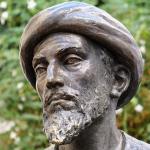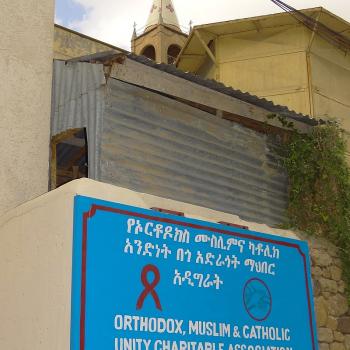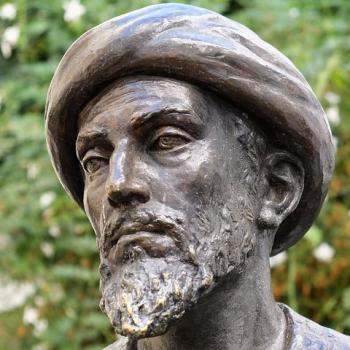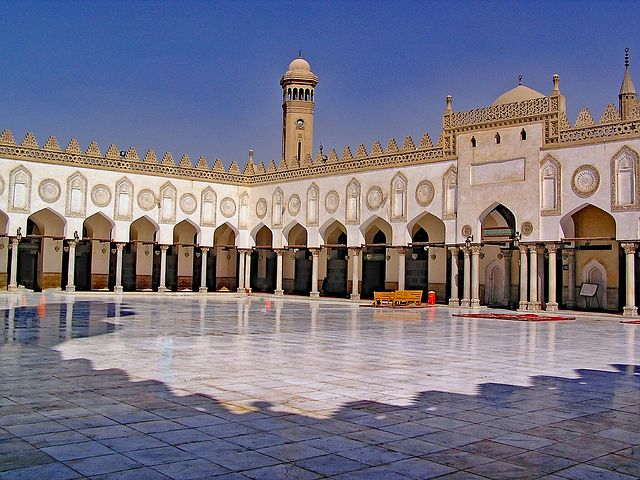
EDUCATION, SCHOOLS AND UNIVERSITIES
The roots of the golden age can be traced back to the emphasis on seeking and spreading knowledge. In its earliest form, the education took place in the mosques. In fact the masjid e Nabawi, or the Prophet’s mosque in Medina was not only a place of worship but a center for education and study of the Qur’an. Gradually many mosques throughout the Muslim world started having schools within the mosques, which later branched out as separate buildings.
Imam Jafar Al Sadiq (700- 765), Shia Muslim’s sixth Imam, is believed to have a Madrassa in the outskirts of Medina where the very early education and scholarship took place. He was a theologian, philosopher, astronomer and a polymath and is reported to have taught over 4000 students. He is considered a jurist and the Fiqh Jafaria (Jurisprudence of Jafar) is named after his teachings and interpretations of the teachings of Islam. Some of his famous students include Abu Hanifa, founder of Sunni Hanafi school of thought, Malik Ibn Anas, founder of Sunni Maliki school of thought and Jabir Ibn Hayyan- the famous alchemist and father of Chemistry. His teaching laid the foundation for what later turned into the golden age.
I had the personal experience of visiting the ruins of this “university” (though it was not one in the traditional sense) while visiting Medina several years ago. It was first of its kind in the Islamic world and not very well known, I was taken to the site by a local guide. What stands now are the foundations and walls that are no more than a few feet tall now.
The House of Wisdom, or bait al Hikmah, was built in the 8th century under Abbasid regime in Baghdad. It started with collection of translation of the Greek and Persian work, and eventually turned into an academy for arts, sciences and letters.
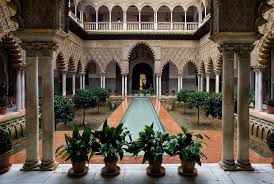
Al- Qarawiyin in Fez, Morocco, is the oldest existing, continually operating and the first degree-awarding educational institution in the world according to UNESCO and Guinness World Records. It was founded in 859 C.E. by Fatima al-Fihri, after she inherited her father’s fortunes. It developed quickly into a center for theology, astronomy, philosophy, mathematics and languages. Some of the famous alumni include Ibn Khaldun (Historian), Maimonides (Jewish philosopher) and al-Idrisi (Geographer).
Then there is Al-Azhar university and mosque in Cairo, founded by the Fatmids in year 970 C.E. It is one of the most prestigious universities in the Islamic world to this date, offering advanced degrees in theology, jurisprudence, philosophy and logic. It was named to honor the daughter of Prophet Muhammad, Fatima whose nickname was Zahra (the luminous). It is considered one of the oldest degree-awarding universities in the world.
Al-Rushd, Averroes: (1126-1198)- Born in Cordoba, he was a polymath, alchemist, theologist but his most famous work is in the field of Philosophy and critical thinking.he wrote profusely on Aristotle and is credited for reviving the work of Aristotle, bringing it to the Islamic golden age, which then caused a revival in Europe. for this, he earned the nickname of The Commentator. he fought to include philosophy and thought as critical part of Islamic theology, including interpretation of the Scriptures. Because of his position, he often found himself in opposition to the orthodox Asharites dogma and Imam Ghazali. he was also a royal physician and wrote many treatises, including General Principles of Medicine, which was used as Medicine textbook in Europe for a long time. Inspired by his critical thinking, there are many schools named after him, including one in the San Francisco bay area.
MATHEMATICS, ALGEBRA AND CHEMISTRY
Al-Khwarizmi is considered the father of Algebra for founding Algebra as an independent discipline. Algebra is derived from the word al jabr, meaning ‘reunion of broken parts’ which he introduced in his treatise he Compendious Book on Calculation by Completion and Balancing in year 830 CE. Later in the 10th century, Al Karaji advanced these concepts further to free algebra from its geometrical roots.
Algorithms are considered essential for computing and many IT giants such as Facebook rely on algorithms. Its roots can be traced back to the Greek mathematicians but the term algorithm is derived from the work of mathematician Al Khwarizmi’s work.
Perhaps one of the most significant advances made by Arabic mathematics began at this time with the work of al-Khwarizmi, namely the beginnings of algebra. It is important to understand just how significant this new idea was. It was a revolutionary move away from the Greek concept of mathematics which was essentially geometry. Algebra was a unifying theory which allowed rational numbers, irrational numbers, geometrical magnitudes, etc., to all be treated as “algebraic objects”. It gave mathematics a whole new development path so much broader in concept to that which had existed before, and provided a vehicle for the future development of the subject. Another important aspect of the introduction of algebraic ideas was that it allowed mathematics to be applied to itself in a way which had not happened before. Source: O’Connor, John J.; Robertson, Edmund F., “Arabic mathematics: forgotten brilliance?”, MacTutor History of Mathematics archive, University of St Andrews.
Jabir Ibn Hayyan or Geber (722-815):

Born in Iran, he is widely considered as the father of Chemistry. A student and follower of the sixth Shia Imam Jafar Al Sadiq, he devised the processes of sublimation, crystallization, distillation, purification, oxidation and filtration among others. He discovered sulfuric, nitric and nitromuriatic acids. Like so many others from this era, he was a polymath, a physician, astronomer and alchemist but is most well known for his work in Chemistry.
The chemical and pharmaceutical industry today use many of the processes described by Jabir and it is safe to say this would not have been possible without his immense contributions to the filed of Chemistry. Great Book of Chemical Properties a and The Weight and Measures are among his significant writings.
Al- Razi or Rhazes (864-925): Born in Iran, and a polymath. In addition to being a doctor and his contributions to Medicine as noted above, he advanced the work of Jabir in Chemistry even further. He designed more than 20 lab instruments such as crucible, cucurbit that are still in use.
EARTH AND ASTRONOMY
A detailed description is not possible here but I will mention a few contributions to the fields of earth sciences and astronomy. Muslim astronomers obtained rather accurate measurements of the tilt of the earth that results in change in weather, measured the circumference of earth as 25,012 miles, which is very close to the current calculation of 24,897 miles at the equator and 24,855 through the poles. Al-Biruni and Ibn Hazm believed the earth was spherical. Al Burini also discussed that the earth rotates around its own axis and fixed the direction of Mecca from any spot on earth- an important function for Muslims as they pray facing Mecca.
Muslim astronomers were among the first, if not the first to set up observatories, dedicated to the study of stars and the heavens. These resulted in accurate calculations of planetary positions, lunar phases and eclipses.
Nicolaus Copernicus repeatedly refers to Al Zarqali and Al-Battani, two of the astronomers from this era in his book De Revolutionibus.
In Western astronomy most of the accepted star names are Arabic, a few are Greek and some are of unknown origin. Names such as Cursa (الكرسيّ) meaning the chair(of Orion), Altair (الطّائر) and Acrab ( عَقْرَب) meaning Scorpion, have Arabic names. These stars derive their Arabic names for their description by Arab astronomers but many of these names became Arabic from the translations of the work (Almagest) by Ptolemy- the famous Greek astronomer.
The above account hopefully gives a glance into the immense contribution of the Islamic golden age to the modern world. We are thankful to their contributions that paved the way for modern medicine, Chemistry, Algebra, computer industry, chemical industry, agriculture (which I did not cover in this article) and astronomy among other major fields.
In my next article, I will discuss the relationship between Muslims, Jews and Christians during the Islamic golden age.
[1] 1001 Inventions- The Enduring Legacy of Muslim Civilization. 3rd Edition
[2] 1001 Inventions- The Enduring Legacy of Muslim Civilization. 3rd Edition
[3] Cosman, Madeleine Pelner; Jones, Linda Gale (2008). Handbook to Life in the Medieval World. Handbook to Life Series.


